Your beloved alaga just let out a peculiar meow as you walked in, followed by a low rumble. Was that a greeting? A demand for dinner? Or perhaps a subtle complaint about the quality of last night’s chin rubs? For many cat parents, these daily vocalizations can feel like a charming, yet utterly mysterious, part of living with a feline. What if you could truly understand what your cat is trying to tell you?
Cats, those enigmatic creatures, have a far richer and more nuanced vocal repertoire than many realize. While they also communicate through intricate body language and scent, their vocalizations offer a direct window into their immediate emotions and desires. Unlocking these secrets isn’t just fascinating; it’s a cornerstone of expert cat care, transforming your relationship into a truly responsive and harmonious partnership. Let’s dive deep into the fascinating world of cat sounds and discover what your furball is trying to say.
The Feline Vocal Spectrum: A Comprehensive Guide
Cats might seem like masters of subtle hints, but once you learn their vocal language, you’ll be amazed at how expressive they can be. Here’s a breakdown of their primary sounds and their common meanings:
Meows (The Human-Oriented Call)
The meow is arguably the most common cat sound you’ll hear. Interestingly, adult cats rarely meow at each other; this vocalization is largely a learned behavior developed specifically for human interaction. It’s their way of getting our attention!
- Variations:
- Short, polite meow: Often a greeting, like “Hello!” or “You’re home!”
- Demanding, insistent meow: “Feed me!,” “Let me out!,” or “Play with me, now!” It’s usually louder and more persistent.
- Drawn-out meow/mroooow: Can indicate a complaint (“I’m bored,” “Where have you been?”), or even confusion.
- Trilling meow: A soft, rolling “mrrowl” that’s often a friendly invitation or a mother cat calling her kittens.
- Silent meow: You see their mouth open, but no sound comes out. This is often a polite greeting or request where the sound is too high-pitched for humans to hear, or simply a very soft vocalization meant for close proximity.
- Expert Insight: Cats essentially ‘train’ us to respond to their meows. If you respond every time your cat meows for food, they’ll learn that meowing gets results!
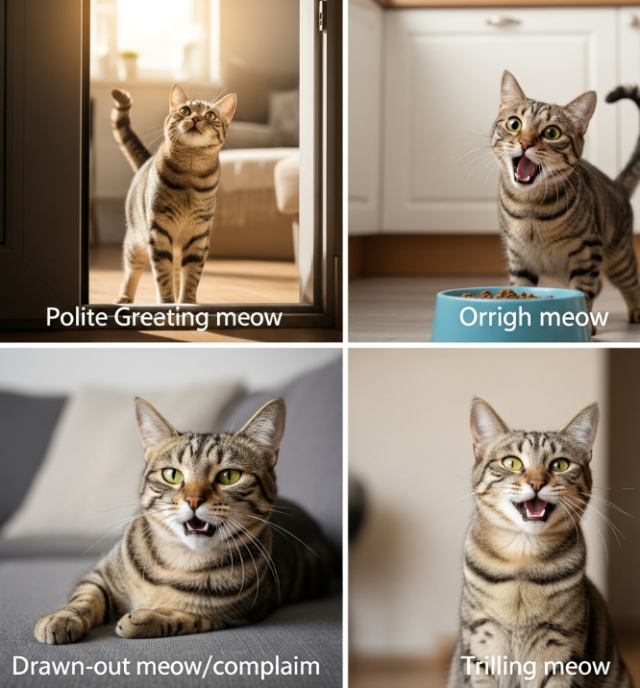
Purrs (The Comfort & Beyond Sound)
The cat purring is perhaps the most universally recognized sound of feline contentment, but it’s more complex than just happiness.
- Variations:
- Gentle rumble: Often indicates deep relaxation, comfort during petting, or a general sense of well-being.
- Loud motor: Can be a strong solicitation for attention or affection.
- Contexts: Contentment, relaxation, soliciting attention, but also self-soothing during times of injury, stress, or even birth.
- Expert Insight: The frequency of a cat’s purr (usually between 25 and 150 Hertz) has been linked to frequencies that promote bone and tissue regeneration, suggesting a possible healing mechanism. It’s truly remarkable!
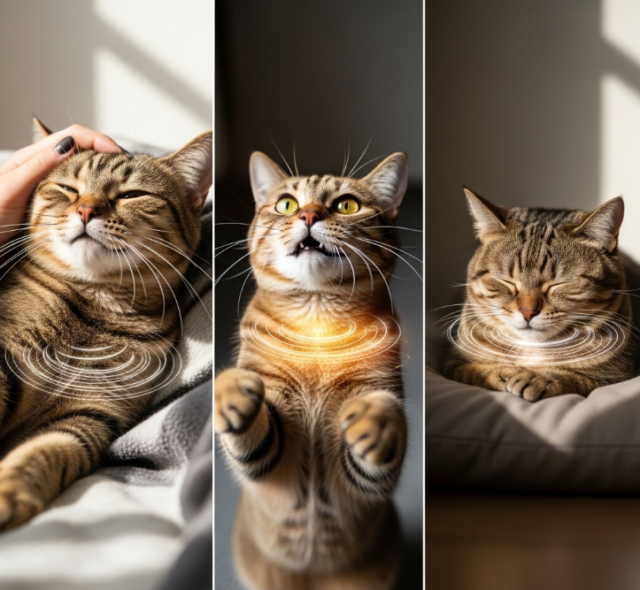
Trills/Chirps (The Friendly Invitation)
These delightful, rolling “prrrrt” sounds are often heard when a cat is happy and wants to engage.
- Contexts: Greeting you as you enter a room, guiding you to their food bowl, or inviting you to play. Mother cats also use chirps to gather their kittens.
- Expert Insight: Unlike the meow, which is more of a learned human-directed behavior, the trill is closer to an innate feline language, a direct descendant of their wild ancestors’ communication with their young.
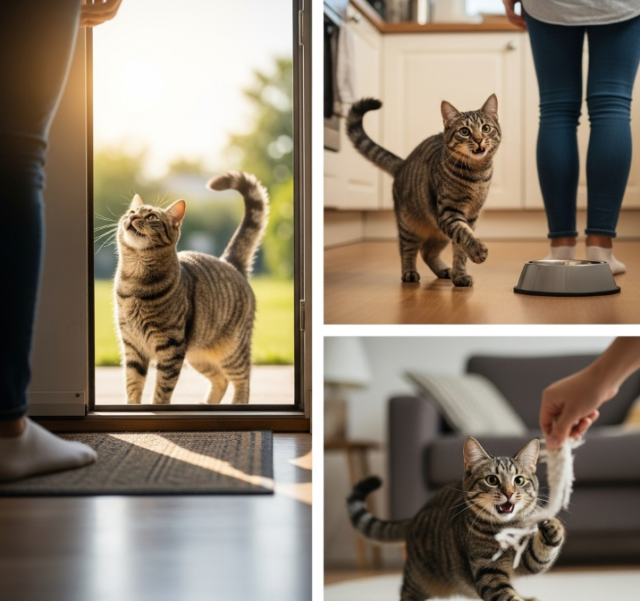
Hisses/Growls (The Warning Signals)
These are unmistakable red flags. A hiss or growl means your cat is feeling threatened, fearful, or aggressive, and wants you to back off.
- Contexts: Fear, aggression, pain, feeling cornered, or defending resources (like food or territory).
- Expert Insight: These are clear “stay away” signals. Ignoring them can escalate the situation and lead to a scratch or bite. Always respect these warnings and give your cat space.
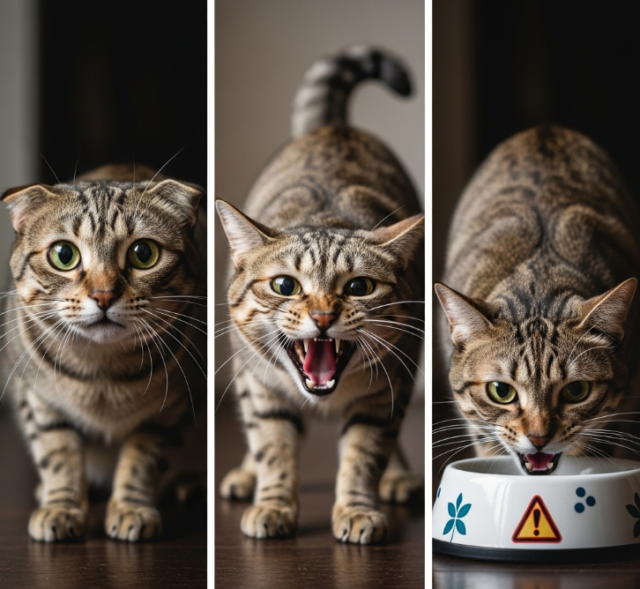
Yowls/Howls (The Distress & Territorial Calls)
A yowl or howl is typically a long, drawn-out, mournful, or agitated vocalization that signals a significant issue.
- Contexts: Mating calls (especially from unspayed females in heat), territorial disputes with other cats, intense pain, extreme distress, or disorientation (common in older cats with cognitive dysfunction).
- Expert Insight: If your cat suddenly starts yowling excessively, particularly at night or without clear context, it’s often a sign of underlying pain or a medical condition. A vet visit is crucial for investigation.
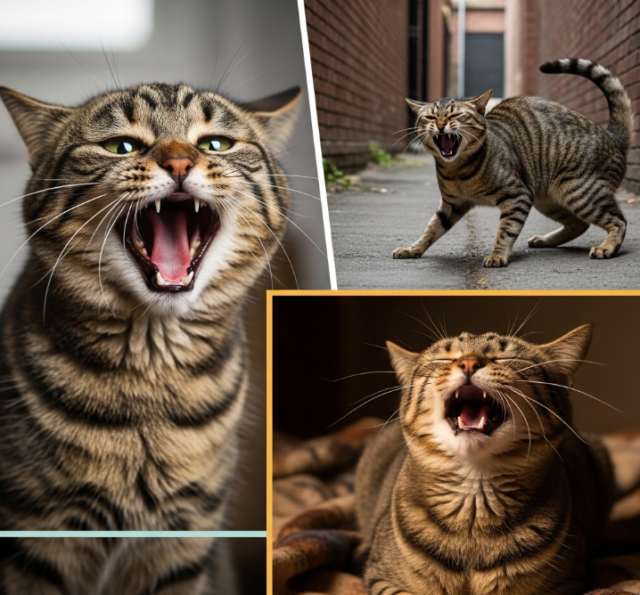
Chatters (The Frustrated Hunter)
You’ll often hear a cat “chatter” when they’re intensely focused on prey they can’t reach, like a bird outside a window.
- Contexts: Observing birds, squirrels, or insects through a window, or sometimes even before pouncing on a toy.
- Expert Insight: This unique sound is thought to be an involuntary motor response, almost like an anticipation or a “frustration vocalization” of their unfulfilled hunting instinct.
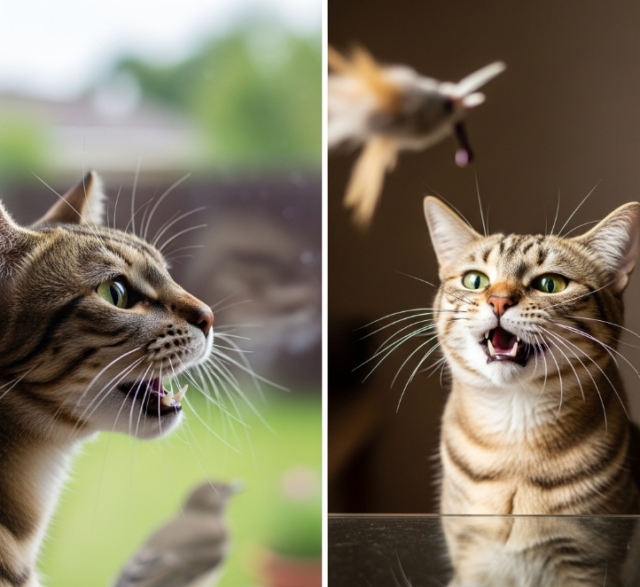
Reading Between the Sounds: Context is King
Understanding the individual cat sounds is a great start, but true cat communication mastery comes from recognizing that a sound almost never stands alone. It’s always part of a larger conversation.
- Body Language Integration: This is paramount. A meow can mean different things depending on your cat’s tail position (high and wagging vs. tucked), ear direction (forward vs. flattened), pupil dilation (wide vs. slits), fur erection, and overall posture (relaxed vs. tense).
- Environmental Cues: What else is happening around your cat? The presence of other pets, unfamiliar people, new objects, or sudden loud noises can all influence their vocalizations. A “demand meow” might become a “fear yowl” if a strange dog suddenly appears.
- Individual Cat Personalities: Just like people, some cats are naturally more vocal than others. A quiet cat’s sudden meow might carry more weight than a constant conversationalist’s. Get to know your alaga’s unique vocal patterns.
Responding Wisely: Building a Better Dialogue
Armed with this knowledge, you can begin to build a much more effective and empathetic dialogue with your cat.
- Active Listening: Don’t just react; truly listen and try to decipher the message behind the sound. Is it a request? A greeting? A warning?
- Appropriate Responses:
- To a greeting meow: Respond with a soft voice, a slow blink, or a gentle head scratch.
- To a request meow (e.g., for food): Fulfill the request if it’s appropriate, but be mindful not to reinforce excessive demanding meows.
- To a hiss/growl: Give your cat space. Remove the perceived threat if possible. Never try to force interaction.
- To yowls/howls: Investigate immediately. Could it be pain, a trapped cat, or a territorial dispute?
- Addressing Problem Vocalizations: If your cat’s vocalizations become excessive, dramatically change, or are consistently agitated (e.g., constant yowling at night, new aggressive sounds), it’s crucial to consult your veterinarian. They can rule out underlying medical issues. If health is clear, a certified feline behaviorist can offer tailored solutions.
- The Power of Positive Reinforcement: Remember, you inadvertently train your cat. If you always reward demanding meows, your cat will continue them. Conversely, rewarding calm behavior or quiet requests can encourage desired vocal patterns.


